Koen Vanmechelen is a Belgian conceptual artist with a decades-long focus on bio-cultural diversity. This has most famously taken the form of his “Cosmopolitan Chicken Project,” an interdisciplinary art project, which he began in the 1990s with the aim of creating a hybrid of all species of chicken in the world, accompanied by ongoing drawings, paintings, sculptures, and installations. The current offspring, now in its 27th generation, have longer lifespans, higher fertility, and hardier immunity than the average domesticated chicken.
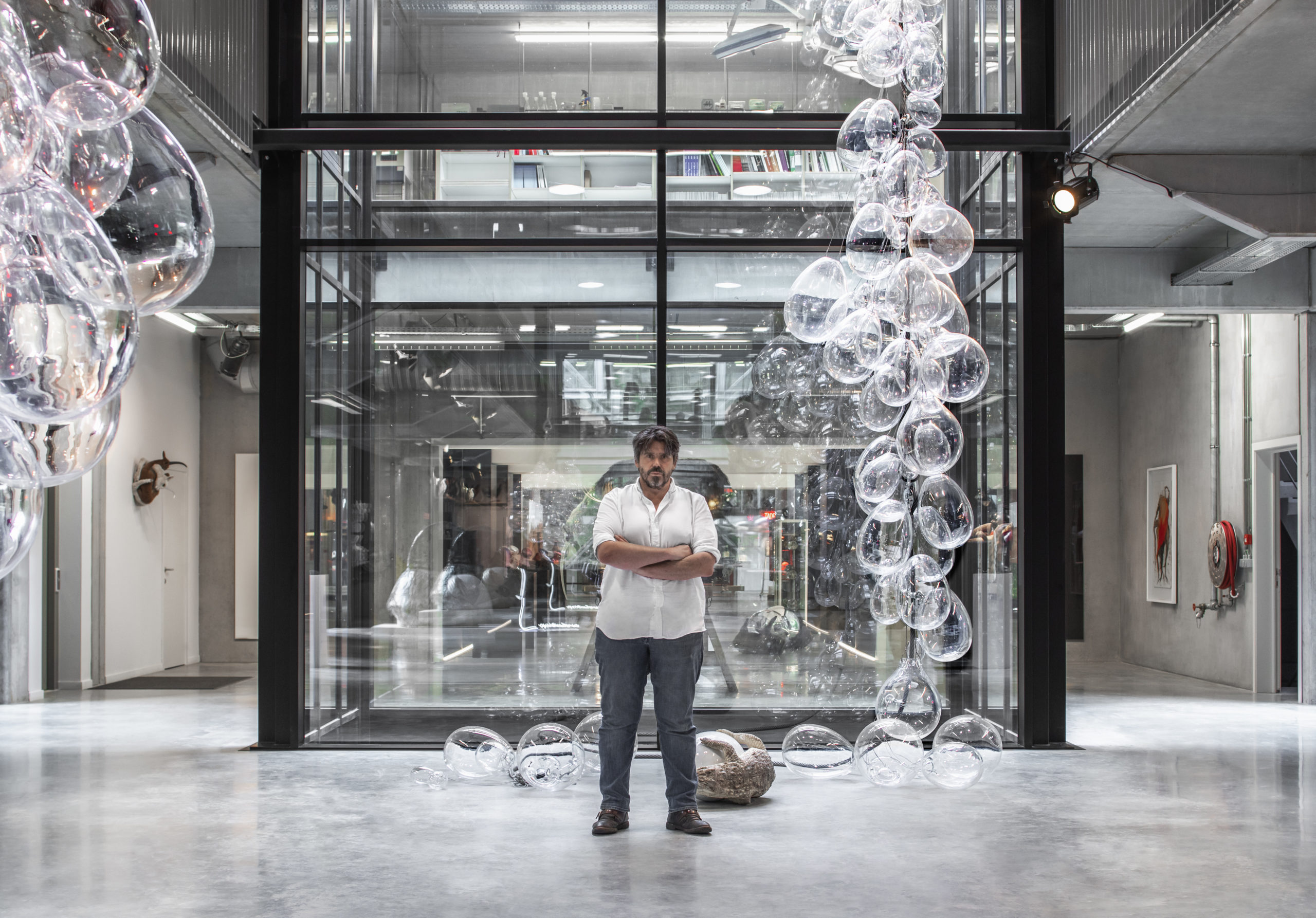
Koen Vanmechelen, photo by Jeroen Verrecht.
This same investigation of diversity is found throughout all of Vanmechelen’s endeavors, expressed in visual, interactive, and often living or once-living media, as well as put into practice for scientific and community advancement projects like “Wooden Coin,” consisting of five oak tree twigs—each representing a continent and each from a different species of oak—grafted onto an oak tree whose roots are adorned with 1 euro coins, in tandem with a charity initiative encouraging viewers to donate 1 euro to SOS Children’s Villages, a children’s humanitarian organization in Austria.
His current one-man show, “Temptation,” is on view at Fondation Linda and Guy Pieters in St. Tropez, France, through August 28. The show features Vanmechelen’s works in tin-glazed ceramic tile, and his multimedia marble bust sculptures incorporating taxidermy and classical mythological iconography.
Whitewall spoke with Vanmechelen about his involvement with bio-cultural diversity, his influences, his newest show, and upcoming projects.
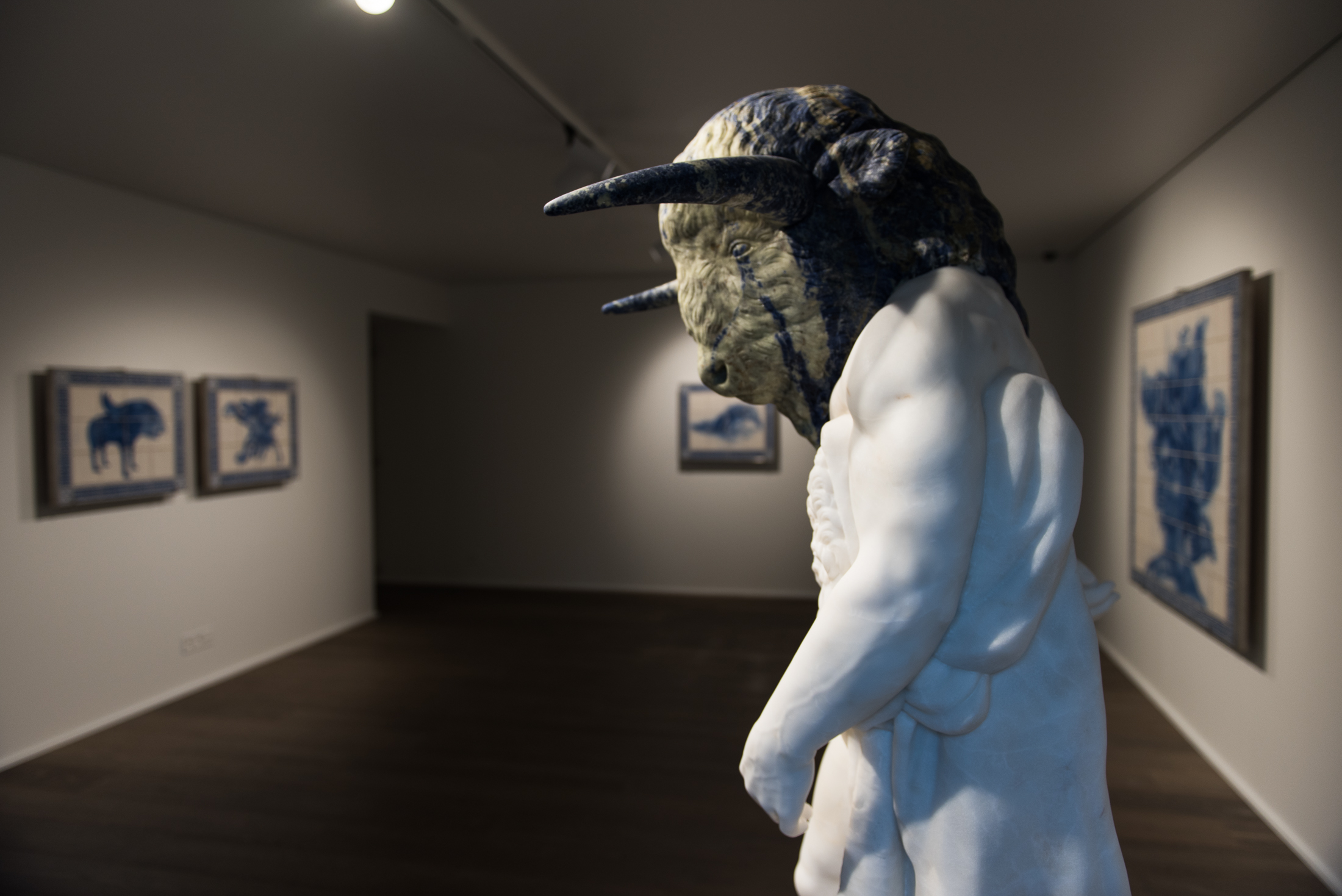
Installation view of “Temptation,” 2022, Koen Vanmechelen; courtesy of Fondation Linda and Guy Pieters, © Robert Shittko.
WHITEWALL: You’re a self taught artist with a background in hotel management and as a gourmet chef. What drew you to the arts?
KOEN VANMECHELEN: I was born in a very artistic family in Belgium, near the Holland border—my father is an artist and philosopher, and my mother is a fashion designer—and I had a classical education, and so when I went into the kitchen, I did so as an artist. Because I grew up in a studio, it was quite obvious for me to find my way in the arts.
WW: What drew you to focus, as an artist, upon bio-cultural diversity?
KV: When I was a kid, I had chickens in the garden, and I had already started to breed them as a child. I had gotten an incubator from my uncle, and was fascinated by how a little chick would come out from the egg, break through its scale. It was about the moment for me, and if the chick succeeds, it’s alive. Life is all about the right moment to grow, otherwise it will stop.
So I saw a relation between the birth of a little chick and the adventure that we have to find in life. And that was how I started making relations between the birth of a chicken and the discoveries of our own humanity. I was also wondering, as a child, how it was possible that we could put something like a chicken in a cage. And those kinds of questions led me to thinking about domestication and shaping a space in which to live.
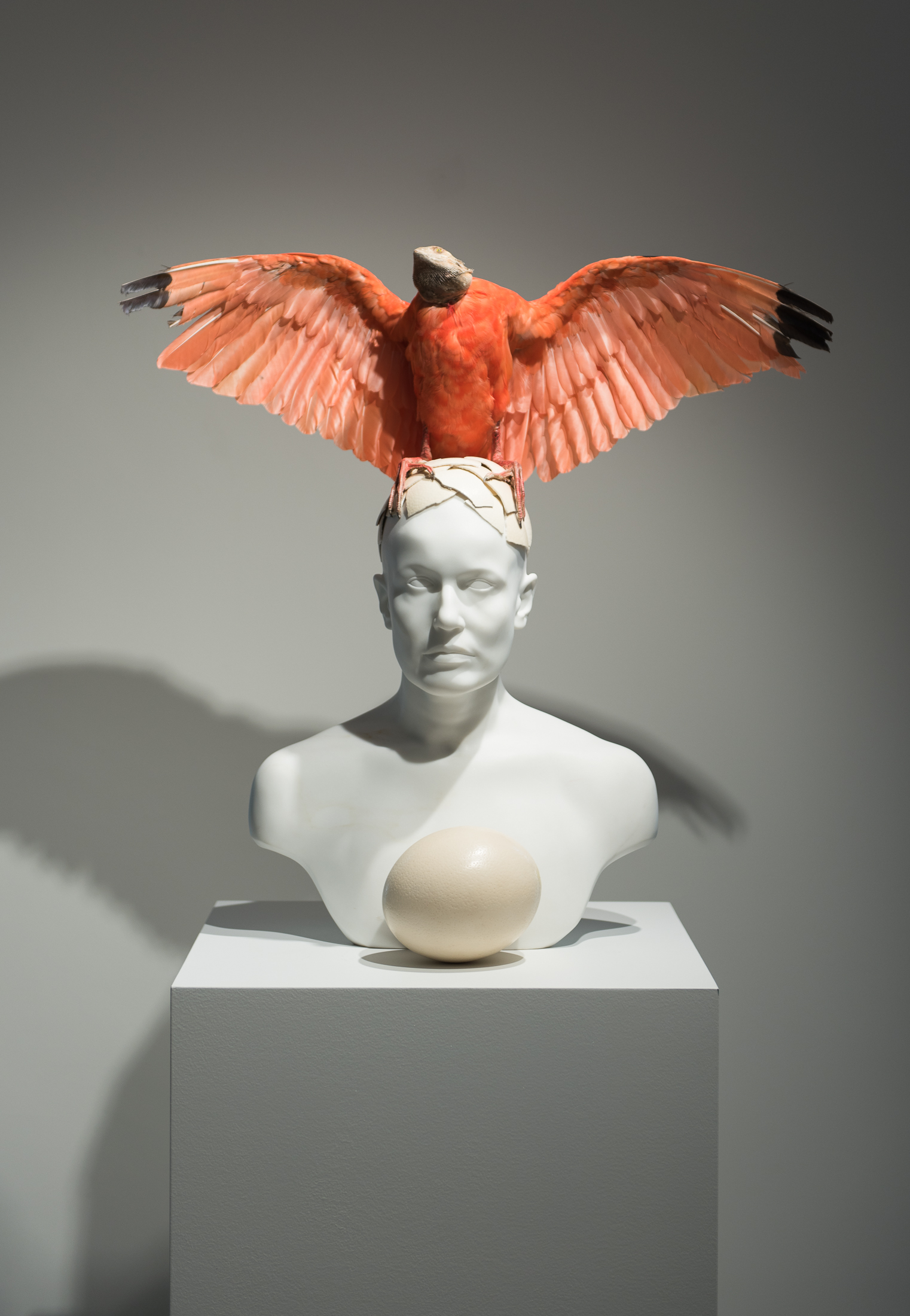
Installation view of “Temptation,” 2022, Koen Vanmechelen; courtesy of Fondation Linda and Guy Pieters, © Robert Shittko.
WW: What were the first works you made along these lines?
KV: I began to make wooden sculptures which looked like very geometric animals. And I realized that the animal that I loved to sculpt most of all was the chicken, because it is a domesticated animal, already a human creation. It was already a piece of art, but it was also a product of inbreeding and monoculture.
And so, wanting to liberate this being, I started to cross-breed the typical Belgian chicken with the French chicken. The French chicken is known as the best in the world, but it is also the product of inbreeding. It wasn’t made only for consumption but also for aesthetic reasons—it has blue legs, a white body, and a red crest, like the French flag.
I had begun to crossbreed these chickens around the time that I was selected for an exhibition which was taking place on the Belgian-French border. And to crossbreed, I realized, was to break the frame which is around a living animal. You set it free from its monoculture, and evolve it along a more diverse gene pool.
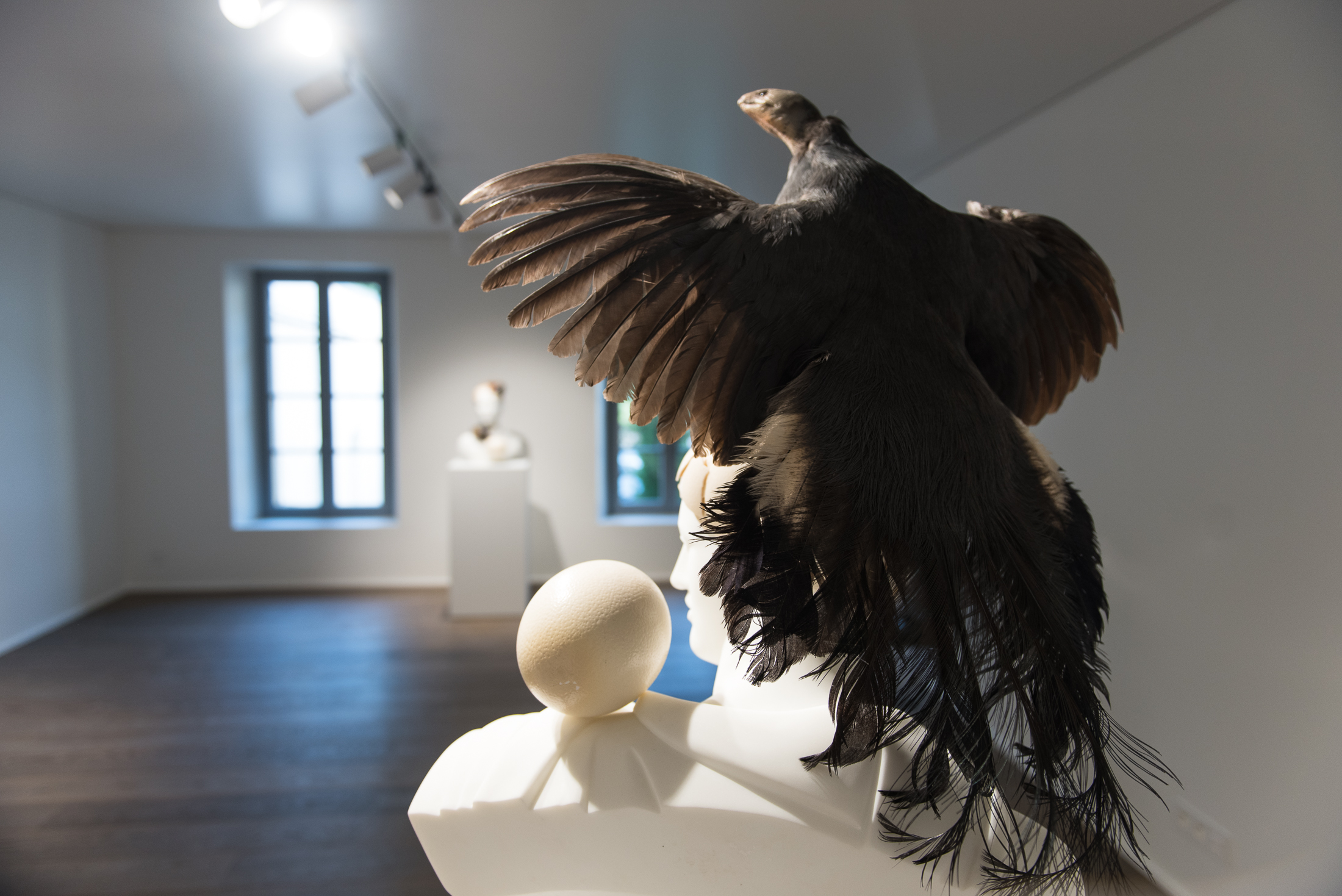
Installation view of “Temptation,” 2022, Koen Vanmechelen; courtesy of Fondation Linda and Guy Pieters, © Robert Shittko.
WW: Where did you first bring your results?
KV: After that, I was immediately invited to the Lisson Gallery in London, by Jill Silverman, and there I brought the Belgian-French hybrid and crossbred it with a typical English chicken. By now, I have bred 27 generations; I had started the crossings in 1999 and the project already brought me around the globe. In every country I made my mission statement, I put chickens in the museum, brought in incubators and chicks, and surrounded the exhibit with photography, video, sculptures, or paintings.
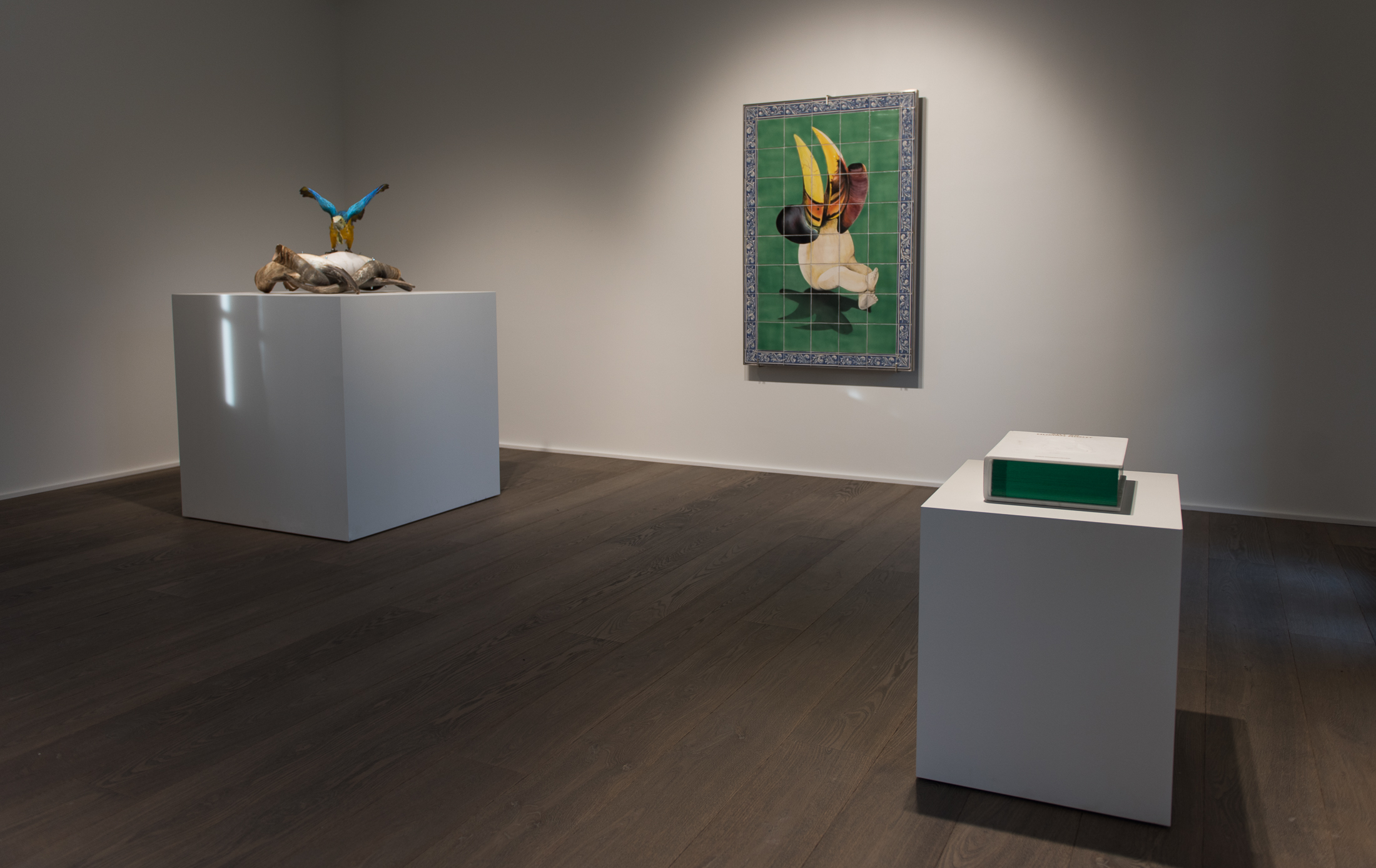
Installation view of “Temptation,” 2022, Koen Vanmechelen; courtesy of Fondation Linda and Guy Pieters, © Robert Shittko.
WW: It seems that your earliest influences were your family surroundings. But you’re also drawn to mythology and the ancient world. What have been your strongest influences when you began to incorporate this through other media, like sculpture and painting?
KV: Through my classical education, I was fascinated by the Renaissance. And that’s how it came about that I had an exhibition in the Uffizi Gallery in Florence. When I do this Cosmopolitan Chicken Project, it is important to me because it is about what we are. It’s a metaphor for how our society evolves while also trying to construct its own evolution. The continual crossbreeding is thus a very active movement. And if you look at my sculptures, paintings, and installations, it is the same: I crossbreed different realities and times.
While I meld, in “Temptation,” two materials like marble and glass, I am also melding the mythological world with the world which we expect to see. I like using glass because it’s a material that you can look through but not see, like glasses. By incorporating these different, diverse times, materials, and realities, you can tell something about the future, about things which have yet to come.
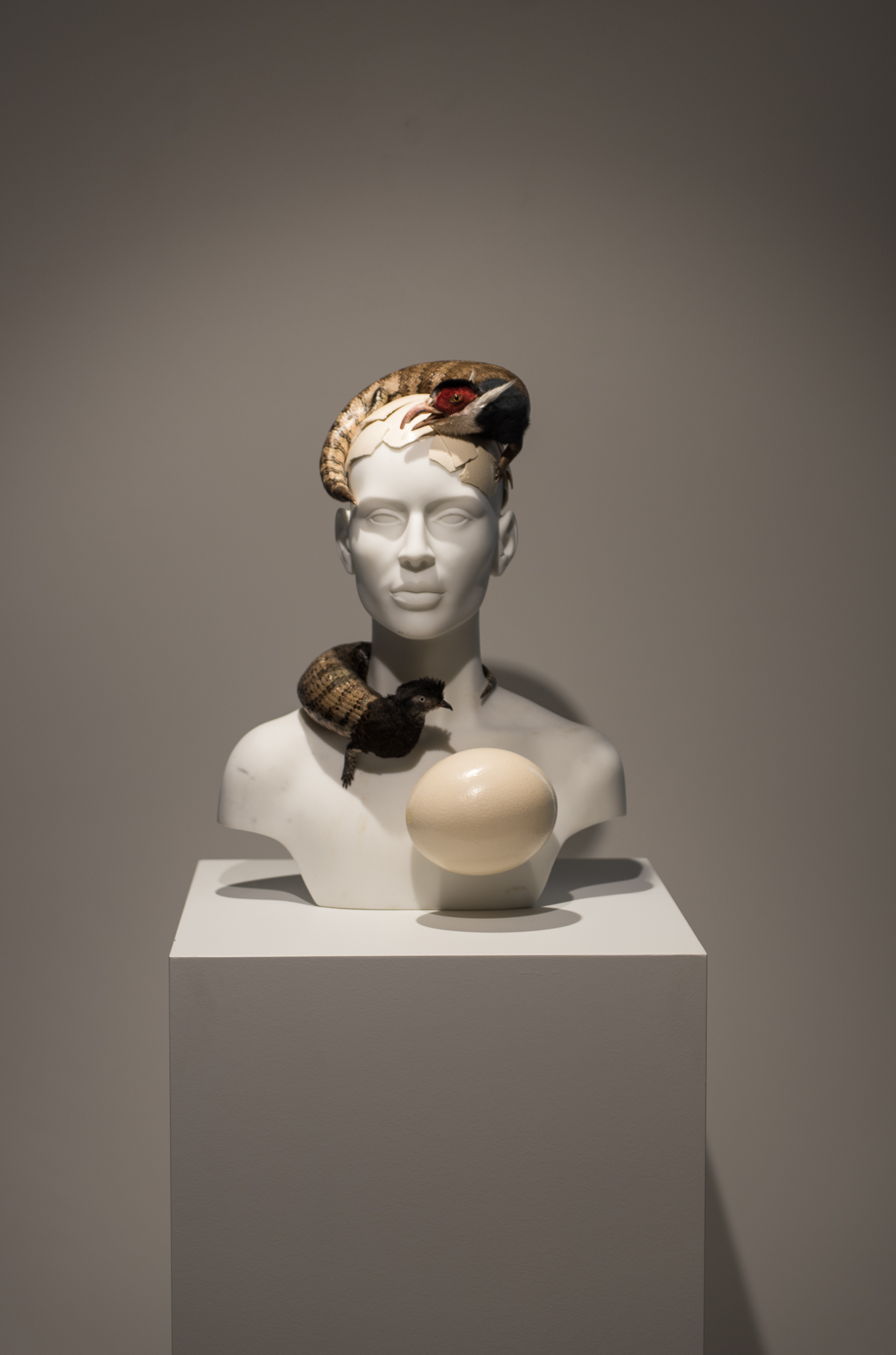
Installation view of “Temptation,” 2022, Koen Vanmechelen; courtesy of Fondation Linda and Guy Pieters, © Robert Shittko.
WW: So it is an effective metaphor of modernity’s crossbreeding of realities. It seems to highlight the dangers of this influence, as well as the benefits which this influence can have; as you mentioned with the French chicken, it depends upon what is prioritized in crossbreeding. Do you believe that we’re at a point where we must always use technology to ameliorate technology-wrought damages, like climate change, or are there still cases in which decreasing use of technology would bring even more benefit?
KV: The world has become very complex, and I think that in order to continue evolving, we do need technology. And that is why the spirit of the Renaissance is so important for me. I consider myself as an artist of what I call a “cosmopolitan Renaissance.” We have access, if we like, to all of the intellects and knowledge in the world, and we need to melt this knowledge together if we are to survive. In the last century especially, we moved rapidly along in making a society which didn’t care about nature, and in doing so we actively destroyed nature. We focused on our own survival, and acted as though we were at the center of the universe, rather than a mere part of it.
So we have to understand, through technology, how we are to live, if we are to continue living. I use my work to set up a discussion for that. Through the chicken program, for example, I show that if we crossbreed in such a way that we bring together more diversity, we not only start to understand each other better but also create a world which is more immune and fertile. It’s not true that we have to go back. We always have to look forward.
On the other hand, if technology—beyond helping us have a better life—is part of our procreation, it becomes quite scary. An algorithmic factor enters into the control of life. We have to be quite careful, and that is why I’m such a big supporter of the arts. The arts, in my view, are the last barrier of humanity. If we lose them, we lose our lives. And that’s why I come up with these kinds of projects and discussions.
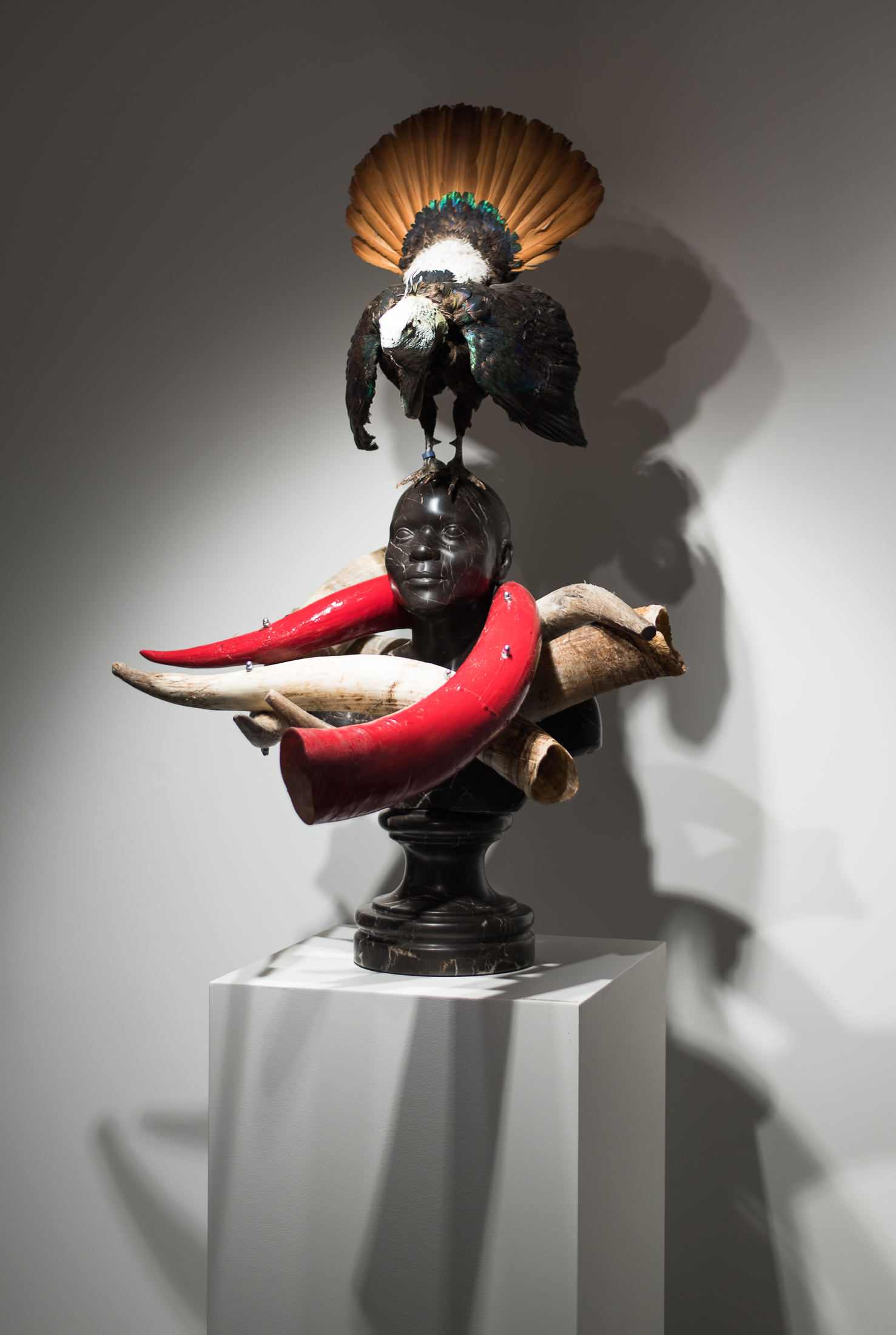
Installation view of “Temptation,” 2022, Koen Vanmechelen; courtesy of Fondation Linda and Guy Pieters, © Robert Shittko.
WW: It seems that, in combining past archetypes while trying to achieve a more immune and diverse present, the role of the classical world for you is almost negative, as though to show the effect of a world in which we thought ourselves the center.
KV: We have to consider what is negative. We never know, in certain moments, what we are doing. I think that art is more of a comment than a criticism of society, because criticism immediately puts you in a set role—you become a politician, or an activist, and so on. I prefer to be an artist, pointing to the heart of what we are doing. The question at the heart of the Cosmopolitan Chicken Project is how we are to survive tomorrow, and I think that it’s by creating more space and always looking to our environment.
In the classical period they didn’t care so much about this, everything was focused upon the individual person in itself, never the link between different human and non-human players in the environment. It is a lesson for us to learn how we should behave, instead of trying to impose how the rest of the world should behave.
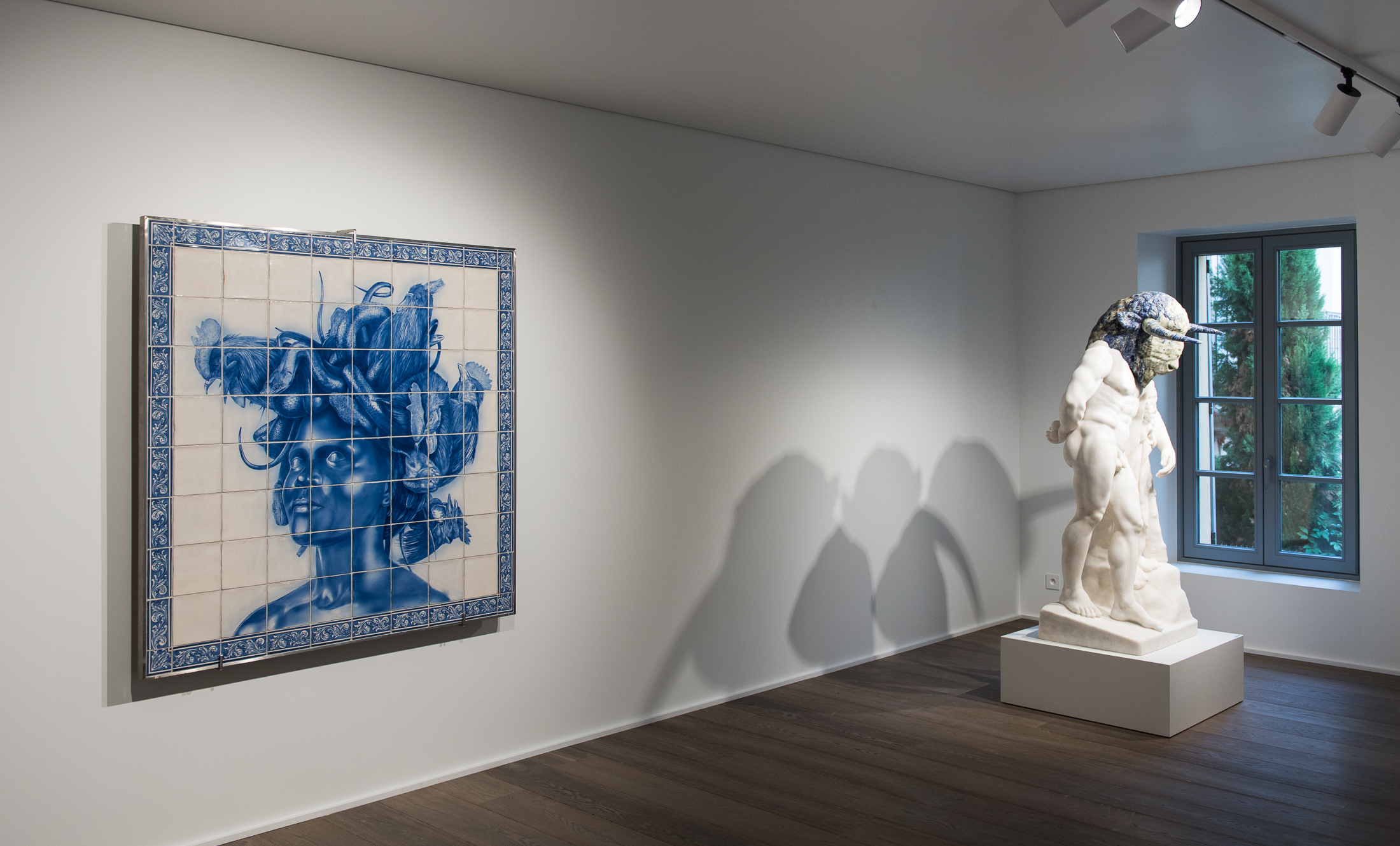
WW: There is a contradiction in that lesson, that we, in ourselves, have to be the ones to decenter ourselves.
KV: Yes, we have to be very modest and look to our surroundings in order to understand how to live. I’ve been saying this, even predicting a virus like COVID, for over 30 years because I’ve felt very strongly, since the beginning, that my projects have something to tell about the future. Now, I believe that we are coming to that moment, and the urgency is to tell the story.
It’s a conversation in which you try to touch the present through its history, to tell something about the future. And from the past, something new does come out. The shell breaks, and a new hybridity is always forming.
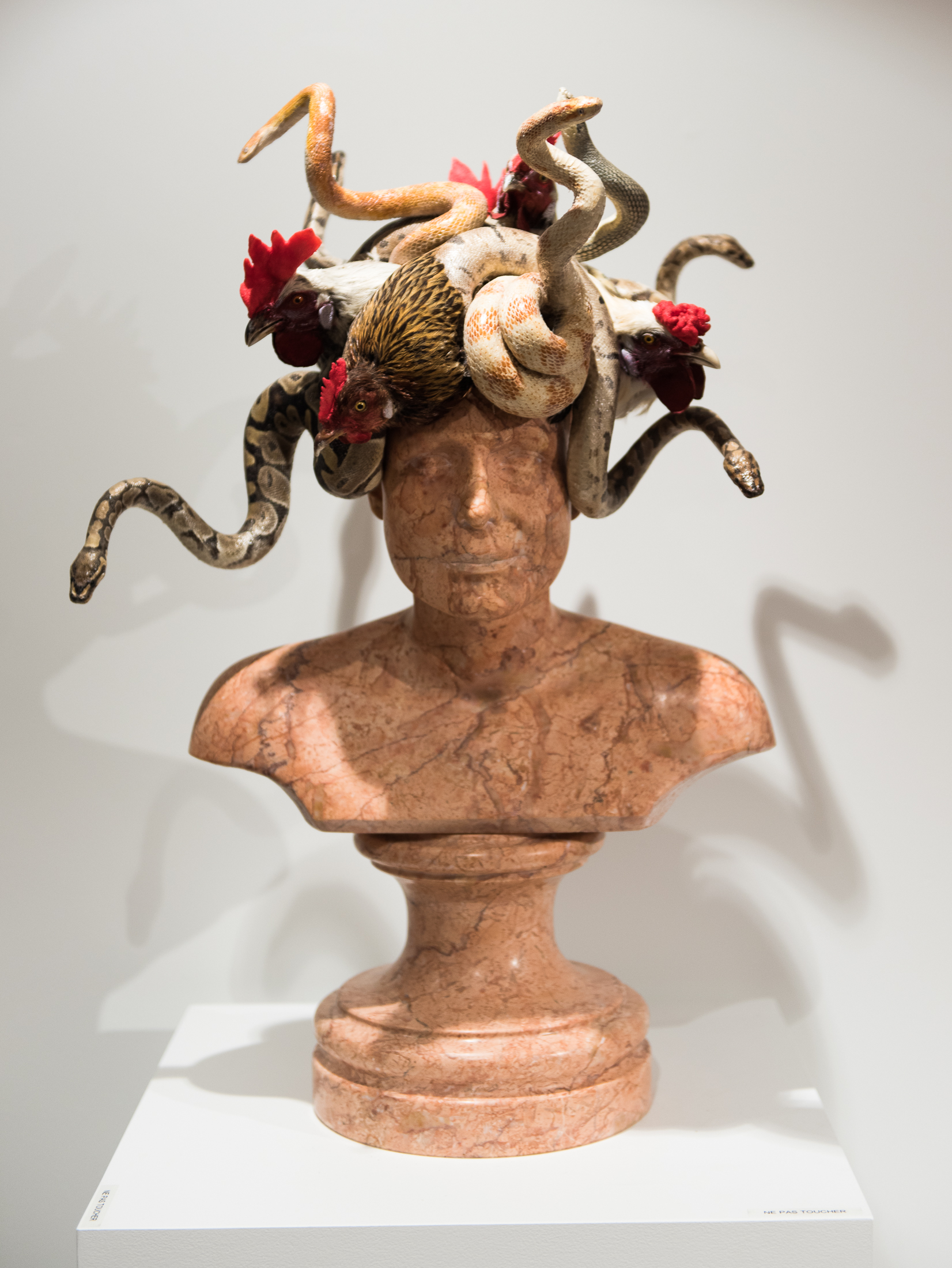
Installation view of “Temptation,” 2022, Koen Vanmechelen; courtesy of Fondation Linda and Guy Pieters, © Robert Shittko.






